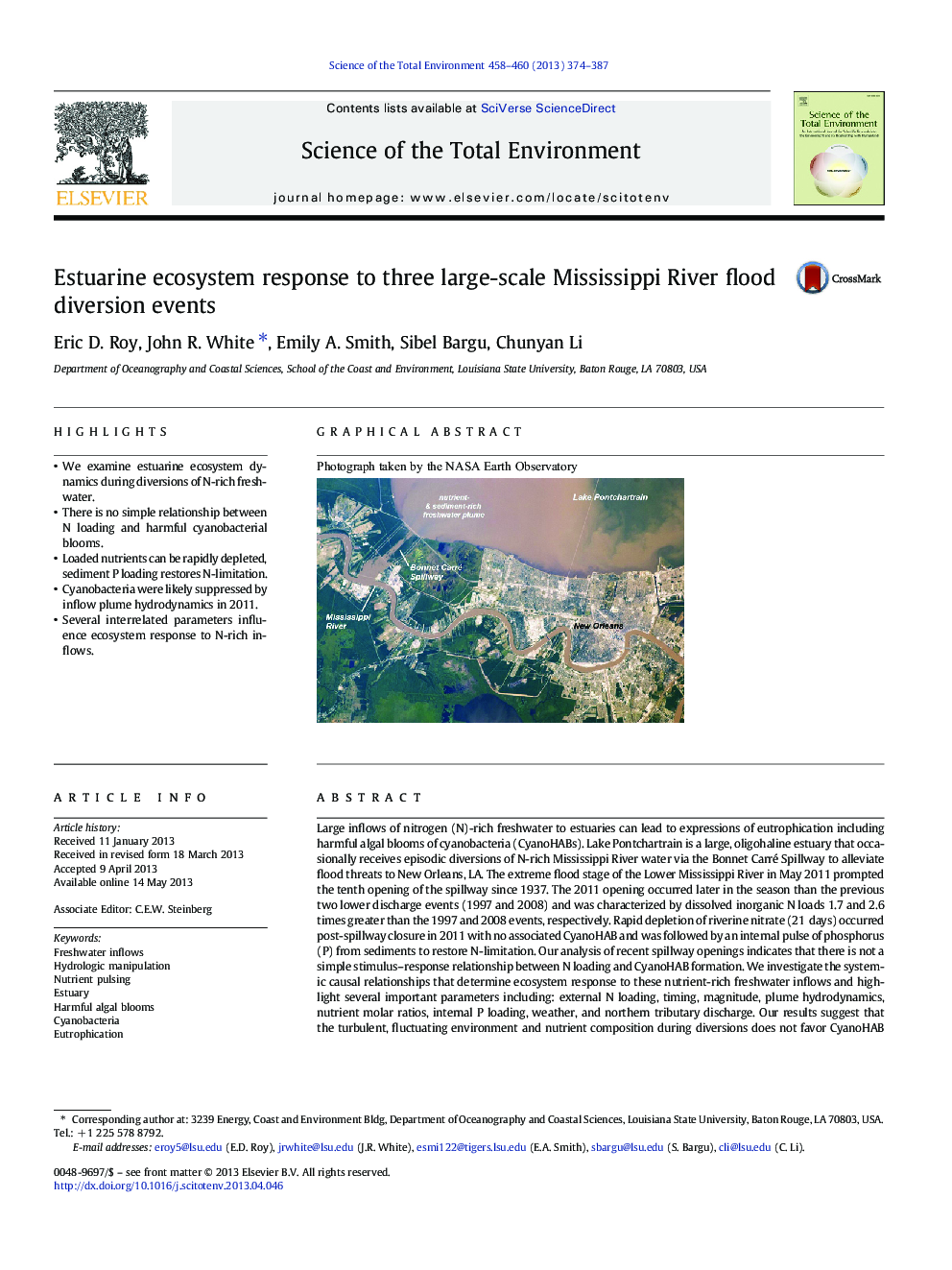| کد مقاله | کد نشریه | سال انتشار | مقاله انگلیسی | نسخه تمام متن |
|---|---|---|---|---|
| 4428641 | 1619800 | 2013 | 14 صفحه PDF | دانلود رایگان |

• We examine estuarine ecosystem dynamics during diversions of N-rich freshwater.
• There is no simple relationship between N loading and harmful cyanobacterial blooms.
• Loaded nutrients can be rapidly depleted, sediment P loading restores N-limitation.
• Cyanobacteria were likely suppressed by inflow plume hydrodynamics in 2011.
• Several interrelated parameters influence ecosystem response to N-rich inflows.
Large inflows of nitrogen (N)-rich freshwater to estuaries can lead to expressions of eutrophication including harmful algal blooms of cyanobacteria (CyanoHABs). Lake Pontchartrain is a large, oligohaline estuary that occasionally receives episodic diversions of N-rich Mississippi River water via the Bonnet Carré Spillway to alleviate flood threats to New Orleans, LA. The extreme flood stage of the Lower Mississippi River in May 2011 prompted the tenth opening of the spillway since 1937. The 2011 opening occurred later in the season than the previous two lower discharge events (1997 and 2008) and was characterized by dissolved inorganic N loads 1.7 and 2.6 times greater than the 1997 and 2008 events, respectively. Rapid depletion of riverine nitrate (21 days) occurred post-spillway closure in 2011 with no associated CyanoHAB and was followed by an internal pulse of phosphorus (P) from sediments to restore N-limitation. Our analysis of recent spillway openings indicates that there is not a simple stimulus–response relationship between N loading and CyanoHAB formation. We investigate the systemic causal relationships that determine ecosystem response to these nutrient-rich freshwater inflows and highlight several important parameters including: external N loading, timing, magnitude, plume hydrodynamics, nutrient molar ratios, internal P loading, weather, and northern tributary discharge. Our results suggest that the turbulent, fluctuating environment and nutrient composition during diversions does not favor CyanoHAB formation and that the immense size and timing of the 2011 diversion may have resulted in near complete post-diversion CyanoHAB suppression by hydraulic flushing.
Photograph taken by the NASA Earth ObservatoryFigure optionsDownload as PowerPoint slide
Journal: Science of The Total Environment - Volumes 458–460, 1 August 2013, Pages 374–387